At first glance, the plugs used for Cat5 and Cat6 Ethernet cables appear to be identical, yet subtle differences inside make them better suited to specific cable types and performance levels. This article is designed to clarify what RJ45 connectors are, explain the distinctions between Cat5 and Cat6 versions, and help you understand why choosing the right connector matters for network reliability and speed.
An RJ45 connector is the standard plug used to terminate Ethernet cables, allowing them to link computers, routers, switches, and other networked devices. Formally known as an 8P8C (eight positions, eight contacts) modular connector, it features eight tiny metal contacts that align with the copper wires inside the cable to establish a secure electrical connection. To most people, it is familiar as the clear plastic head at the end of a network cable that clicks into place when inserted into a port.
RJ45 connectors play a critical role in modern networking. They are commonly used in LAN setups, provide reliable connections for industrial control systems and IoT equipment, and remain a fundamental component in telecommunications and data center infrastructure.
Even though every RJ45 connector has the same outward shape and fits the same ports, their internal design is not always identical. Different versions are tailored for cable categories like Cat5, Cat5e, Cat6, and Cat6a, each built to handle the specific wire thickness, shielding, and performance levels required to support the intended data speeds and bandwidth.
To learn more about the RJ45 connector — from its construction and wiring standards to practical tips for selection and installation — check out our in-depth RJ45 connector resource.
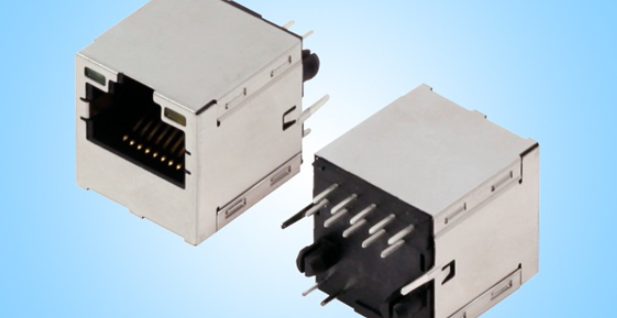
For many years, Category 5 (Cat5) and the enhanced Cat5e standard formed the backbone of Ethernet cabling in homes and offices. Cat5 supports data transmission up to 100 Mbps, which was sufficient during the early days of broadband internet. Cat5e, however, tightened the electrical specifications, reducing interference between wire pairs (crosstalk) and extending performance to 1 Gbps. With a 100 MHz frequency rating, Cat5e is still widely used in residential networks, small office setups, and basic LAN applications, where bandwidth demands remain moderate.
As networks evolved to handle greater volumes of data, Category 6 (Cat6) was introduced to address higher speed requirements. Rated for 250 MHz, Cat6 can support up to 10 Gbps data rates, though typically within shorter distances of about 55 meters. The improvement comes from its thicker copper conductors, tighter twists, and superior insulation, which collectively reduce signal distortion and electromagnetic interference. These qualities make Cat6 well-suited for enterprise environments, high-definition video streaming, cloud-based workloads, and IoT systems where consistency and speed are essential.
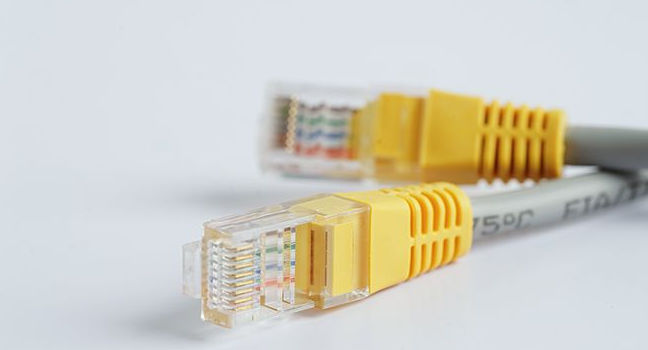
Modern digital activities—from cloud computing to remote collaboration and connected smart devices—demand stable, high-bandwidth networks. Cat6 has therefore become the preferred standard for new installations, offering stronger resistance to noise, higher throughput, and a more reliable connection over time. Choosing Cat6 cabling not only supports today’s needs but also helps ensure that infrastructure remains future-ready as applications and data loads continue to grow.
At first sight, RJ45 connectors for Cat5 and Cat6 cables seem virtually the same. They both follow the familiar 8P8C modular format, with eight contact pins and a locking clip, which means either plug can be inserted into any standard Ethernet socket.
Beneath the surface, however, the two are not built in exactly the same way. A Cat6 RJ45 connector incorporates subtle but critical design enhancements to cope with faster data transmission. These often include slightly larger conductor channels that accommodate the thicker 23 AWG wires common in Cat6 cabling, along with pair guides or load bars that keep wire twists intact right up to termination. Many Cat6 connectors also feature improved contact geometry, thicker gold plating, and optional shielding, all of which work together to reduce signal interference, control impedance, and deliver more stable performance at higher frequencies.
When it comes to compatibility, the RJ45 jack connectors will always fit physically, but the overall network speed depends on the lowest-rated part. Using a Cat6 connector on a Cat5e cable will still perform only to Cat5e standards, while attaching a Cat5 connector to a Cat6 cable can limit bandwidth and stability—sometimes the link will pass a basic connection test but fail under certification or heavy traffic.
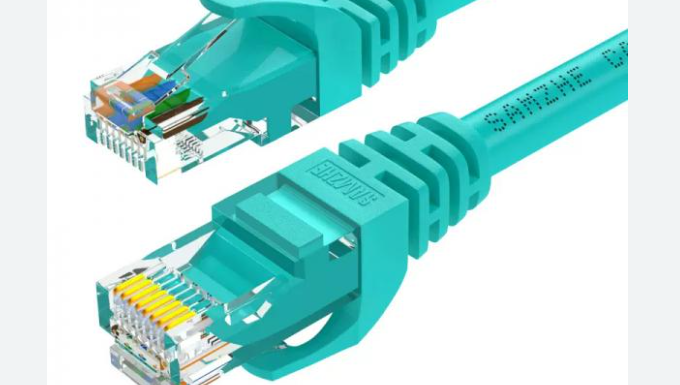
|
Feature |
Cat5 / Cat5e Connector |
Cat6 Connector |
|
Appearance |
Same 8P8C design, standard size |
Same outward look as Cat5 |
|
Conductor Support |
Fits 24 AWG wires |
Built for thicker 23 AWG wires |
|
Internal Structure |
Basic channel separation |
Better insulation and pair management to minimize crosstalk |
|
Contact Quality |
Standard gold plating |
Often thicker plating for improved conductivity |
|
Performance Match |
Suitable for Cat5/Cat5e networks |
Optimized for Cat6, backward compatible with Cat5e |
Although Cat5e and Cat6 connectors share the same outward appearance, their internal design is noticeably different. Cat6 connectors are built with wider conductor channels, enabling them to handle the slightly thicker 23 AWG wires, whereas Cat5e connectors are generally sized for 24 AWG conductors.
A key distinction is in signal isolation. Cat6 connectors often include enhanced separators or insulation features that help maintain the twist of each pair, reducing near-end crosstalk (NEXT) and ensuring cleaner data transmission at higher frequencies.
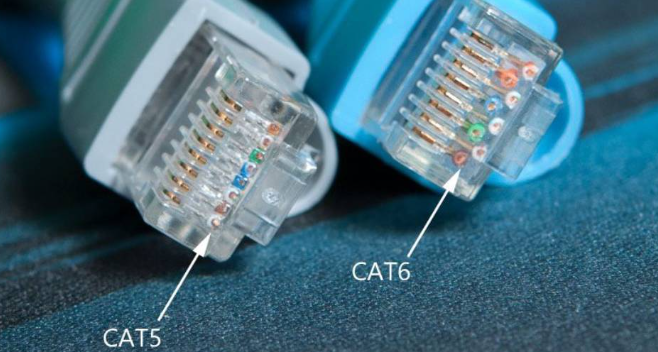
The contact pins are also designed with performance in mind. Many Cat6 models use thicker or more durable gold plating, which improves long-term reliability and provides more consistent conductivity—especially critical for high-speed Ethernet links.
In terms of compatibility, Cat6 connectors can usually be used with Cat5e cables, but the reverse is not always ideal. Pairing a Cat5 connector with Cat6 cable may compromise performance, preventing the link from reaching its intended bandwidth and stability.
Bottom line: The two connector types may look identical, but Cat6 versions are engineered to tighter tolerances and higher specifications to meet the demands of modern, high-speed networks.
It’s a fairly common frustration: you try to terminate a Cat6 cable with an RJ45 jack connector, only to find the wires don’t fit as expected. While the plug design is standardized, the problem usually comes down to compatibility and installation.
One of the main reasons is that Cat6 conductors are slightly thicker—typically 23 AWG—compared to the 24 AWG wires used in Cat5e. Standard RJ45 plugs built for Cat5/5e often don’t have enough space, so the wires can’t seat properly. Another frequent issue is the use of the wrong tools or wiring pattern. Mixing up the T568A and T568B pinouts, or using a crimping tool not suited for Cat6, can cause misaligned pairs and unreliable connections. In other cases, the culprit is simply low-quality or non-compliant connectors that may look right but fail to meet Cat6 standards.
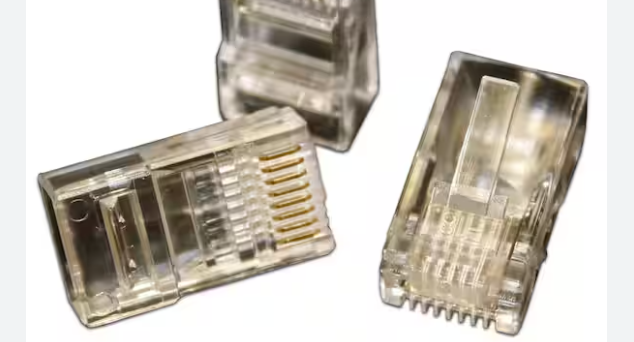
To avoid these problems, it’s best to choose RJ45 connectors designed specifically for Cat6 cables. These plugs are built with larger conductor channels and tighter tolerances to handle higher performance requirements. Using the proper crimping tools and carefully following the wiring scheme ensures a secure fit. For long-term stability, investing in certified, well-made connectors is also worthwhile, as it reduces the chance of connection failures and helps the network perform at its full potential.
Conclusion
While Cat5 and Cat6 RJ45 connectors share the same outward design, their internal construction is tailored to different electrical and physical requirements. Cat6 connectors are engineered with tighter tolerances, improved insulation, and support for thicker conductors—features that ensure stable, high-speed performance. By contrast, Cat5 connectors may fit but often cannot deliver the same results when paired with Cat6 cables.